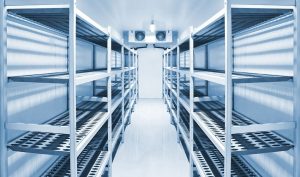The Importance of Cold Storage in Supply Chains
In the intricate dance of modern supply chains, where perishable goods travel vast distances to reach consumers worldwide, maintaining product quality and safety is paramount. From farm to fork, a crucial element in preserving the integrity of temperature-sensitive items such as fresh produce, dairy products, pharmaceuticals, and even certain chemicals, is cold storage infrastructure. Cooling Supply Chains: The Role of Cold Storage
Understanding Cold Storage
Cold storage facilities are specialized warehouses equipped with temperature-controlled environments designed to preserve the quality and extend the shelf life of perishable goods. These facilities typically maintain temperatures ranging from below freezing to just above room temperature, depending on the specific requirements of the stored products.
Types of Cold Storage Facilities
There are various types of cold storage facilities catering to different temperature requirements and storage capacities. Refrigerated warehouses, cold rooms, and refrigerated containers are among the common types. Each serves a specific purpose in the supply chain, ensuring that goods remain within the optimal temperature range throughout transportation and storage.
The Role of Cold Storage in Supply Chain Management
Efficient cold storage management is integral to the smooth functioning of supply chains, offering several key benefits:
1. Preservation of Product Quality
Maintaining the cold chain—from production to distribution—ensures that perishable goods retain their freshness, taste, and nutritional value. Cold storage prevents spoilage and degradation, safeguarding the quality of products until they reach the end consumer.
2. Extension of Shelf Life
Cold storage significantly extends the shelf life of perishable items, allowing for greater flexibility in transportation and distribution schedules. This extension translates to reduced waste and increased profitability for producers, retailers, and other stakeholders along the supply chain.
3. Compliance with Regulatory Standards
In many industries, adherence to strict temperature regulations is mandatory to ensure product safety and compliance with government standards. Cold storage facilities play a crucial role in meeting these requirements, providing controlled environments that meet or exceed regulatory guidelines.

4. Mitigation of Supply Chain Risks
By reducing the likelihood of product spoilage, cold storage helps mitigate risks associated with supply chain disruptions. Unforeseen delays in transportation or storage can have significant financial implications, but proper cold chain management minimizes these risks, ensuring continuity and reliability.
Challenges in Cold Storage Management
While cold storage facilities offer numerous benefits, they also present unique challenges:
1. Energy Consumption
Maintaining low temperatures in cold storage facilities requires substantial energy consumption, contributing to operational costs and environmental concerns. Implementing energy-efficient technologies and practices is essential to mitigate these challenges and promote sustainability.
2. Infrastructure Investment
Building and maintaining cold storage infrastructure entail significant capital investment. Especially in regions with extreme climates or limited access to reliable electricity, establishing robust cold chain networks requires careful planning and investment in infrastructure development.
3. Technology Integration
Effective cold chain management relies on the integration of advanced technologies such as temperature monitoring systems, RFID tracking, and data analytics. Implementing these technologies can be complex and requires expertise to ensure seamless integration and optimal performance.
The Future of Cold Storage in Supply Chains
As global trade and consumer demand for perishable goods continue to rise, the role of cold storage in supply chains will only become more critical. To meet evolving needs and overcome challenges, the industry is witnessing advancements in cold storage technology, including:
1. Automation and Robotics
Automation and robotics are revolutionizing cold storage operations, streamlining processes, and improving efficiency. Automated storage and retrieval systems (AS/RS) and robotic picking systems are increasingly being adopted to enhance productivity and reduce labor costs.
2. Sustainable Practices
Driven by environmental concerns and regulatory pressures, cold storage facilities are embracing sustainable practices such as energy-efficient refrigeration systems, eco-friendly insulation materials, and renewable energy sources. These initiatives not only reduce carbon footprint but also lower operating costs in the long run.
3. Blockchain Technology
Blockchain technology holds promise for enhancing transparency and traceability in the cold chain. By providing immutable records of temperature data, product origins, and handling procedures, blockchain can improve food safety, quality assurance, and compliance with regulatory standards.
In conclusion, cold storage plays a pivotal role in ensuring the integrity and safety of perishable goods throughout the supply chain. Despite facing challenges such as energy consumption and infrastructure investment, advancements in technology and sustainable practices offer promising solutions. As supply chains continue to evolve, cold storage will remain a cornerstone of efficient and reliable logistics operations.


Recent Comments